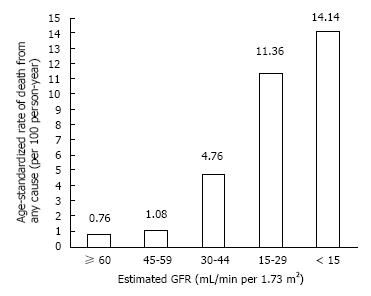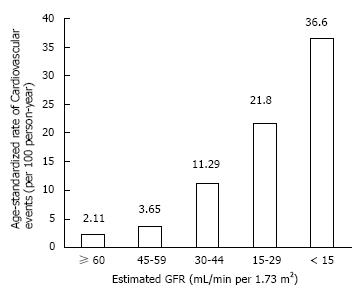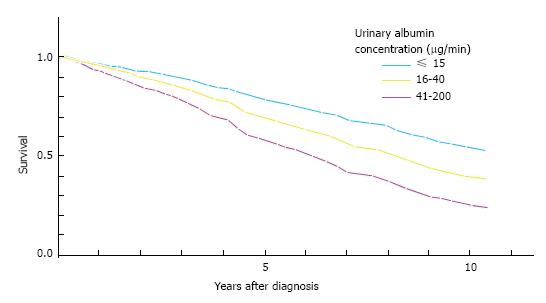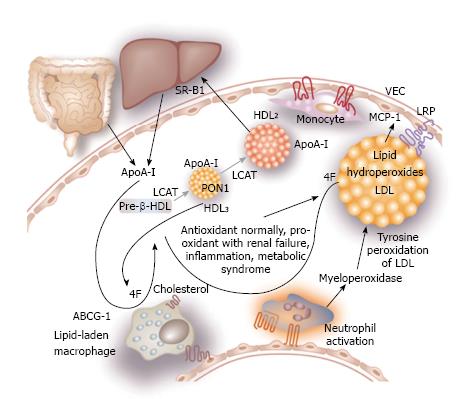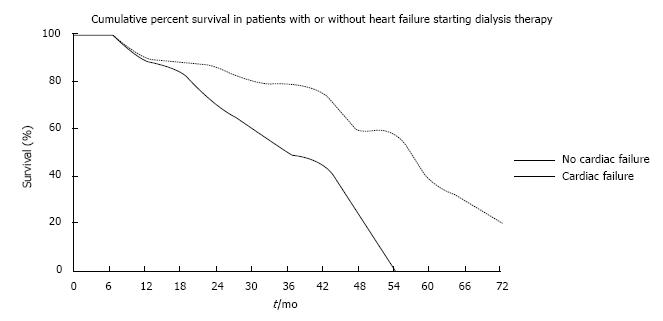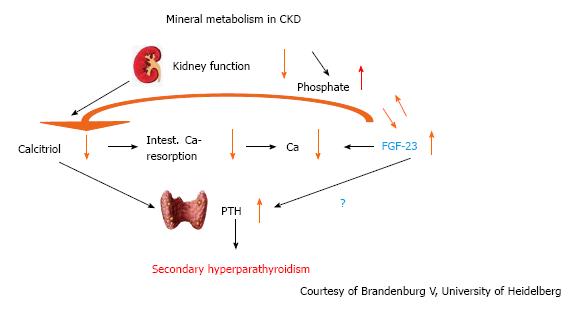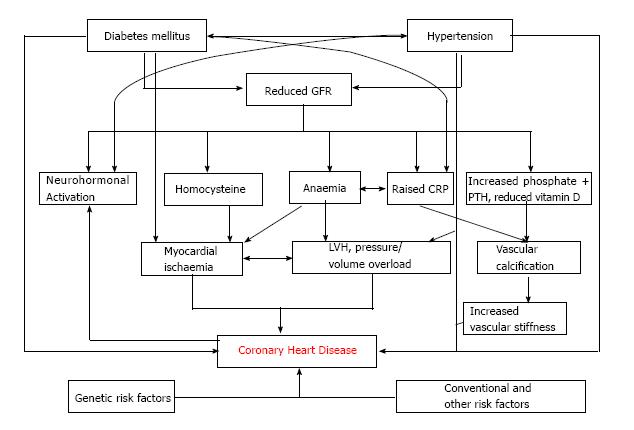Copyright
©2014 Baishideng Publishing Group Inc.
World J Nephrol. Nov 6, 2014; 3(4): 143-155
Published online Nov 6, 2014. doi: 10.5527/wjn.v3.i4.143
Published online Nov 6, 2014. doi: 10.5527/wjn.v3.i4.143
Figure 1 All-cause mortality and its relationship to worsening chronic kidney disease.
After Go AS 2004[1].
Figure 2 Cardiovascular event rates according to chronic kidney disease stage.
After Go AS 2004[1].
Figure 3 The physiological roles of nitric oxide on endothelial function.
Figure 4 Microalbuminuria as a risk factor for death in type 2 diabetes.
Reproduced from Schmitz et al[49], 1988.
Figure 5 Maturation of high-density lipoprotein and the protective effect of apoA-I mimetic peptide 4F.
(Apo)A-I: Apolipoprotein A-I; ABCG1: Adenosine triphosphate–binding cassette transporter G-1 protein; LCAT: Lecithin–cholesterol acyltransferase; SR-B1: Scavenger receptor B1; PON1: Paraoxonase-1; LRP: Lipoprotein-like receptor; VEC: Vascular endothelial cells; MCP-1: Monocyte chemoattractant protein-1; HDL: High-density lipoprotein. After Kaysen[74], 2009.
Figure 6 Premature death related to heart failure in haemodialysis.
After Harnett et al[81], 1995.
Figure 7 Interplay between calcium, phosphate, calcitriol and Fibroblast growth factor-23 in chronic kidney disease.
FGF: Fibroblast growth factor; CKD: Chronic kidney disease.
Figure 8 The association between chronic kidney disease and coronary heart disease.
Adapted from Hage FG 2009[67].
- Citation: Kumar S, Bogle R, Banerjee D. Why do young people with chronic kidney disease die early? World J Nephrol 2014; 3(4): 143-155
- URL: https://www.wjgnet.com/2220-6124/full/v3/i4/143.htm
- DOI: https://dx.doi.org/10.5527/wjn.v3.i4.143









